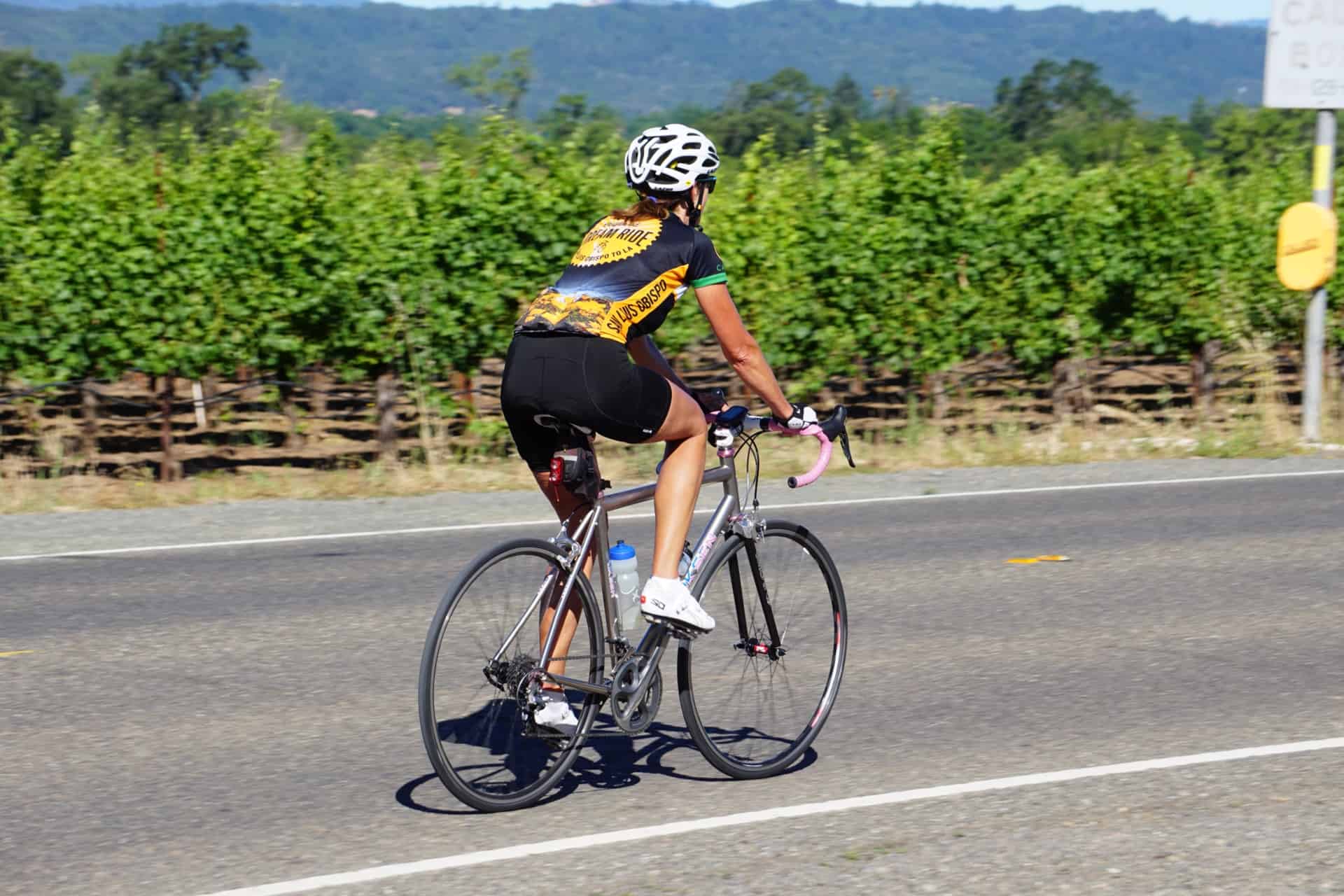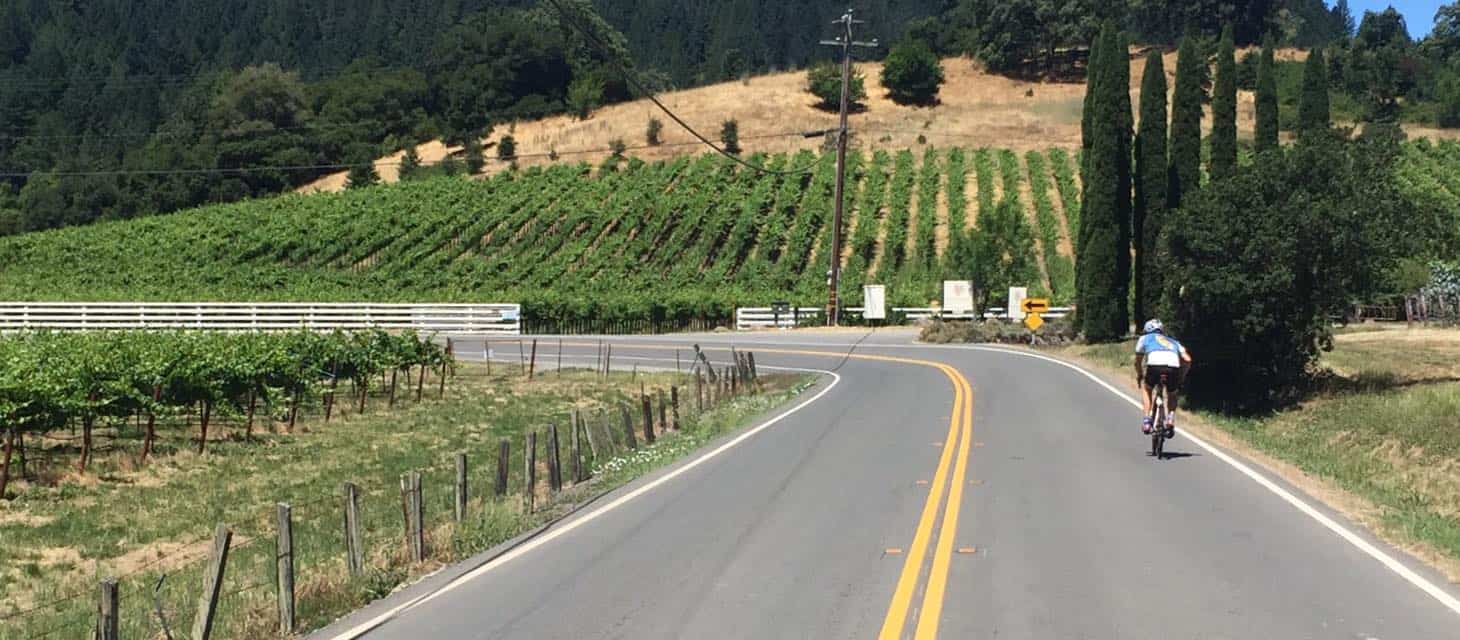SB 1 – How Can the New Gas Tax Improve Bicycling and Build Healthy Communities in California?
Senate Bill 1 passed in April and was signed by Governor Brown, raising the gas tax in California for the first time since 1994 to raise $54 billion in new transportation revenue over the next ten years. Advocacy by CalBike and our allies resulted in some critical changes to SB 1—increased funding for public transit, walking, and bicycling projects, as well as stronger provisions to ensure that road repair projects would build complete streets and mitigate environmental impacts. Ultimately however, our coalition opposed the bill because of some toxic language that gave the trucking industry a pass to pollute the communities of Californians who live near ports and along freight corridors.
Our coalition is now engaging deeply in the massive task of advocating to make sure the new billions will be spent effectively. We need your support to pressure the California Transportation Commission and local transportation agencies to invest in the community improvements California wants instead of simply rebuilding and repaving dangerous roads. See below for opportunities to learn more and get involved…
Here are some of the most exciting pieces of SB 1 for bicycling, walking, fighting climate change, and improving livability and public health in communities across the state:
- $100 million more per year will exclusively support walking and biking projects
- $3 billion per year–the majority of the funding–will go to repairing state- and locally-owned roads, which provides a key opportunity to build safer, complete streets
- $750 million per year will support improving service and expanding public transit
- $250 million per year is for a new program aimed at increasing transportation choices in highly traveled, congested corridors
- $25 million per year for planning grants to support smart growth and development of better projects in the future
For more details, we’re compiling a full analysis of SB 1 funding and programs on our website.
Even though the new tax increase won’t go into effect until November, transportation agencies across the state have begun implementation of the new funding in earnest. As soon as Californians see gas prices go up, policymakers want to be able to point to roads being repaired with that money to justify the extra expense to taxpayers. Applying even more pressure to the urgency policymakers are feeling is the threat of a potential measure on the 2018 ballot to repeal SB 1. A recent poll revealed that a majority of voters are opposed to the gas tax increase.
However, with that urgency to start putting the SB 1 money to work in mind, transportation officials would be wise to ensure that we’re using the new money cost-effectively to make our transportation system safer, cleaner, more sustainable, and more efficient at moving people. If we’re just filling cracks and potholes and rebuilding the same congested roads and bridges–i.e. business as usual–without providing taxpayers other benefits and options for getting around, Californians are unlikely to be totally satisfied with the work. Eighty percent of Californians support a “complete streets” approachwhen repaving roads according to a recent poll by David Binder Research.
Our coalition has come up with 10 guiding principles for transportation officials to embrace as they are deciding how to spend new funds, which we submitted in a letter to the California Transportation Commission earlier this month. The guiding principles call out key needs that support state goals including, among other things: prioritizing social equity with investment; protecting vulnerable communities from air quality, climate, safety, and housing displacement impacts; meaningfully engaging community-based groups in program and project development; promoting mode shift to walking, biking, and transit; and building complete streets on all projects.
The California Transportation Commission is leading a series of workshops over the next few months which are already underway and will define guidelines for the bulk of the funding. Fourteen full- and half-day workshops are on the calendar between now and December.
But these workshops aren’t enough to engage broad public participation in shaping the guidelines for SB 1 programs, so in addition to participating in the CTC workshops CalBike and our allies are planning to do some additional outreach to community-based groups, especially representing underserved communities, to solicit input.
Feel passionate about getting involved? We could use your help!
- Join our upcoming webinar SB 1: Maximizing Accessibility and Community Benefits to learn more about SB 1 funding and programs and opportunities to influence how funds are spent.
- Contact Jeanie@calbike.org to share your ideas, concerns, and feedback on what you would like to see from this new funding, either at the statewide level or in your local community.
- Help our coalition organize a local convening in your area to discuss leveraging SB 1 funds to address local needs, contact Jeanie@calbike.org.
- Finally, sign up on CTC’s website to get updates directly from the state on any of the programs.
- Support our work – join CalBike today.



.jpg)

